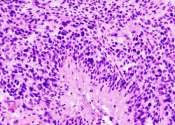Researchers reveal discovery of mechanism leading to drug resistance in prostate cancer
Prostate cancer is the most common cancer among men in the United States. Many patients can live long lives due to early detection and treatment with androgen deprivation therapy. However, despite the benefits of this therapy, ...
1 hour ago
0
59









